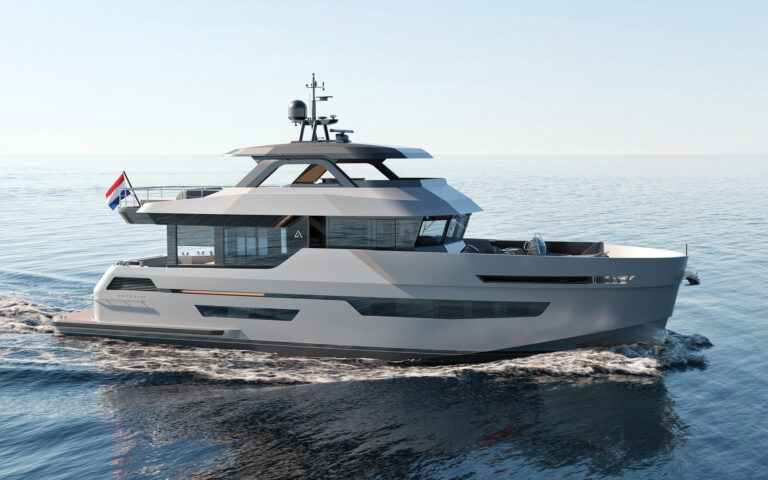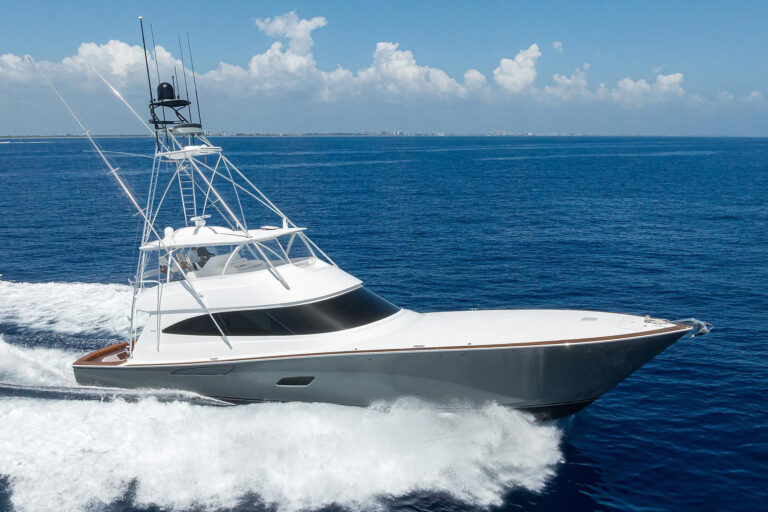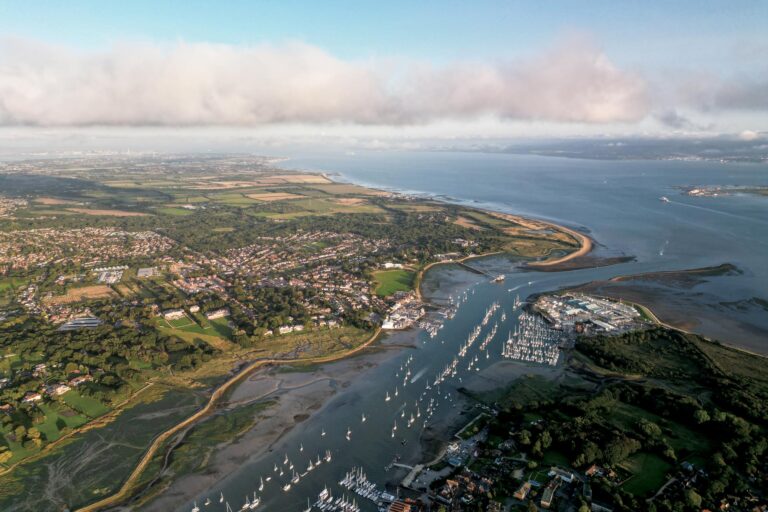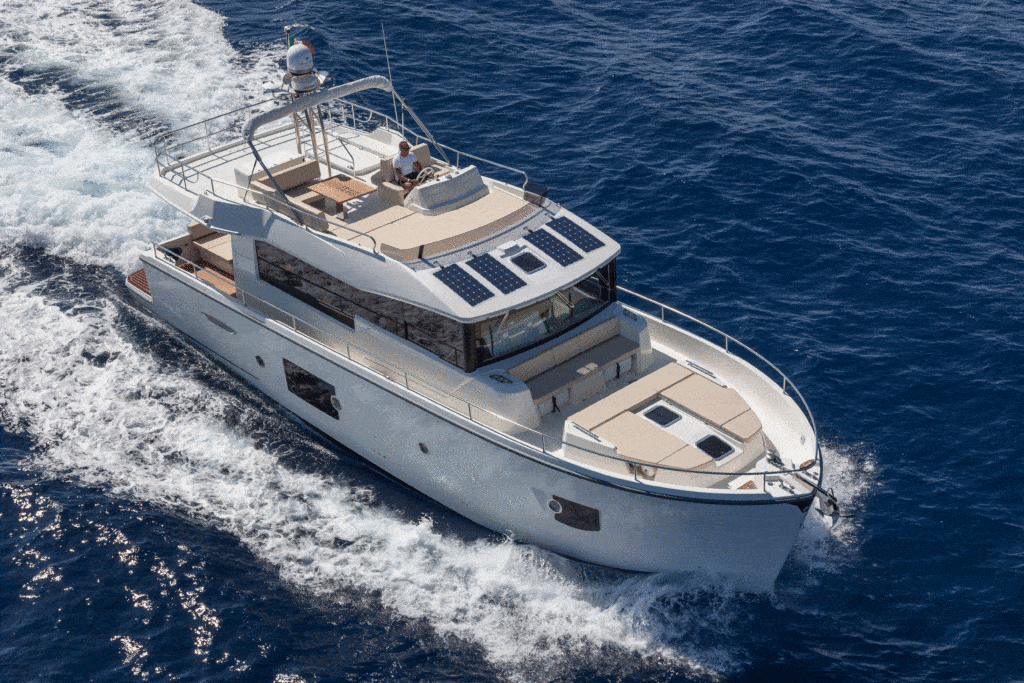
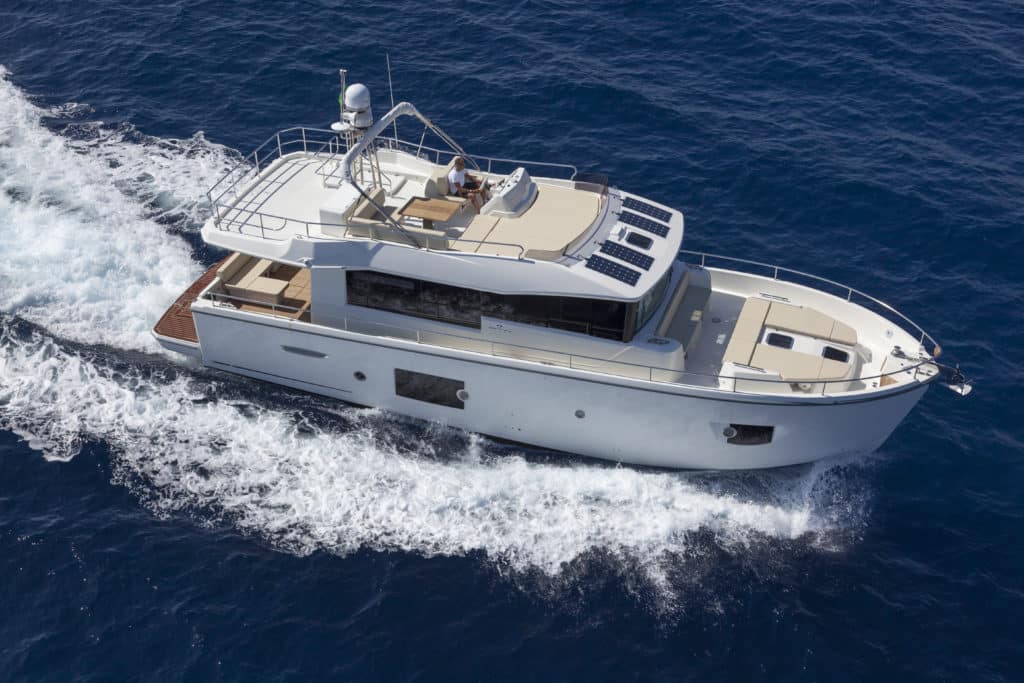
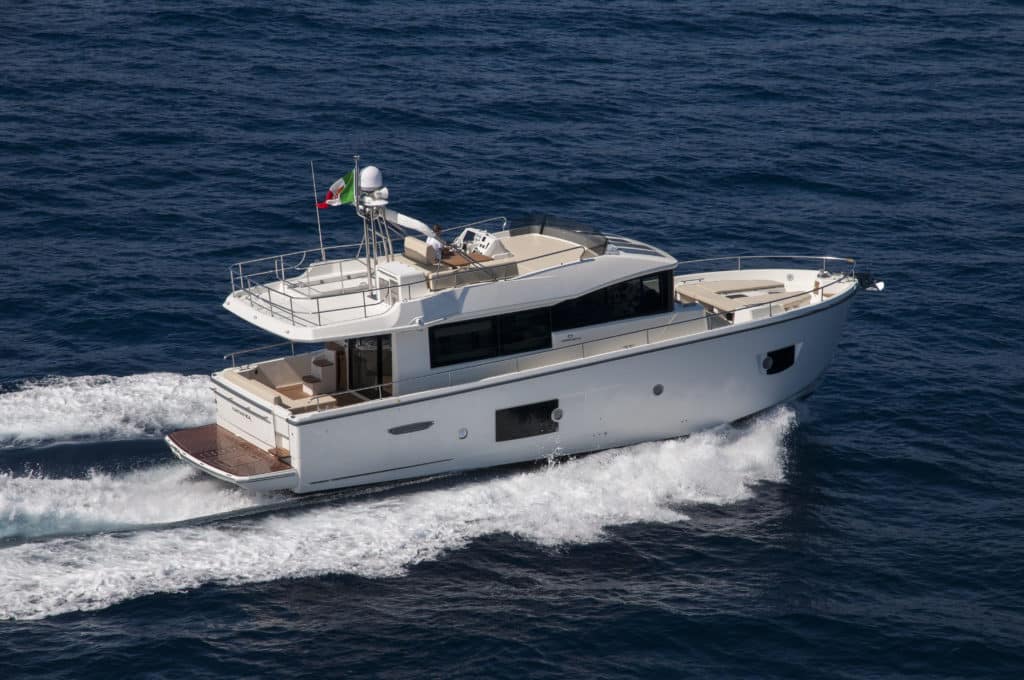
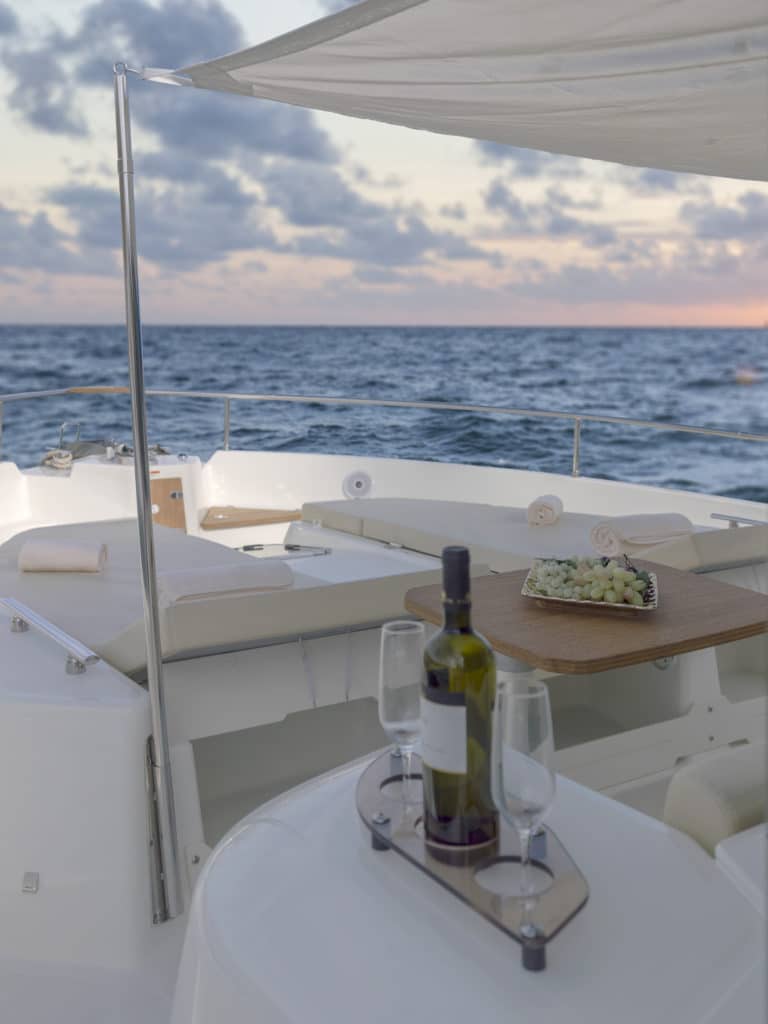
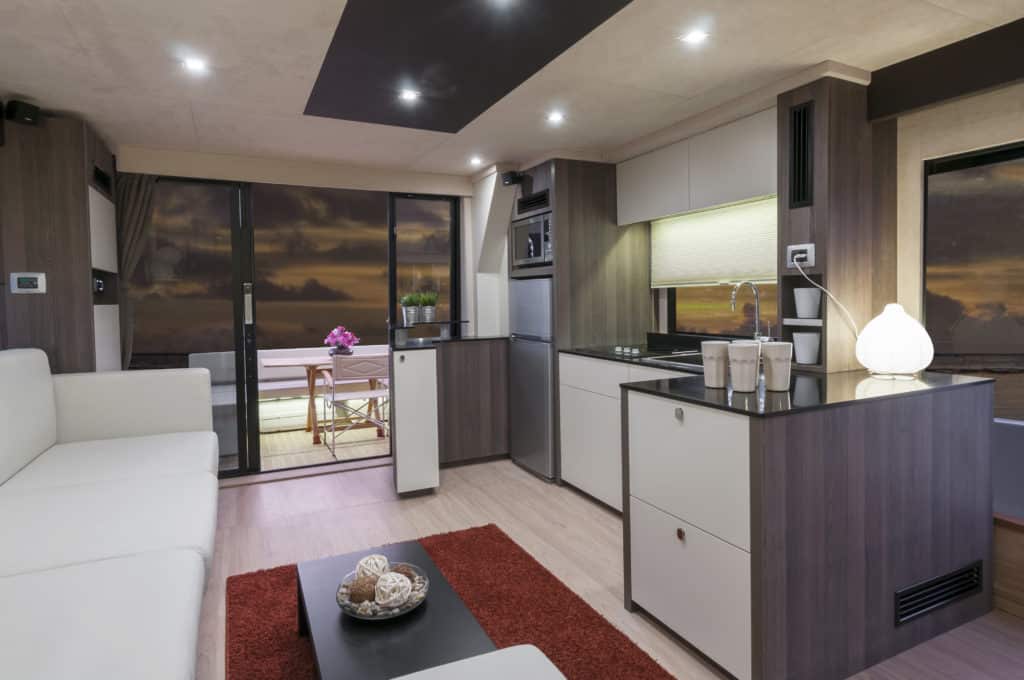
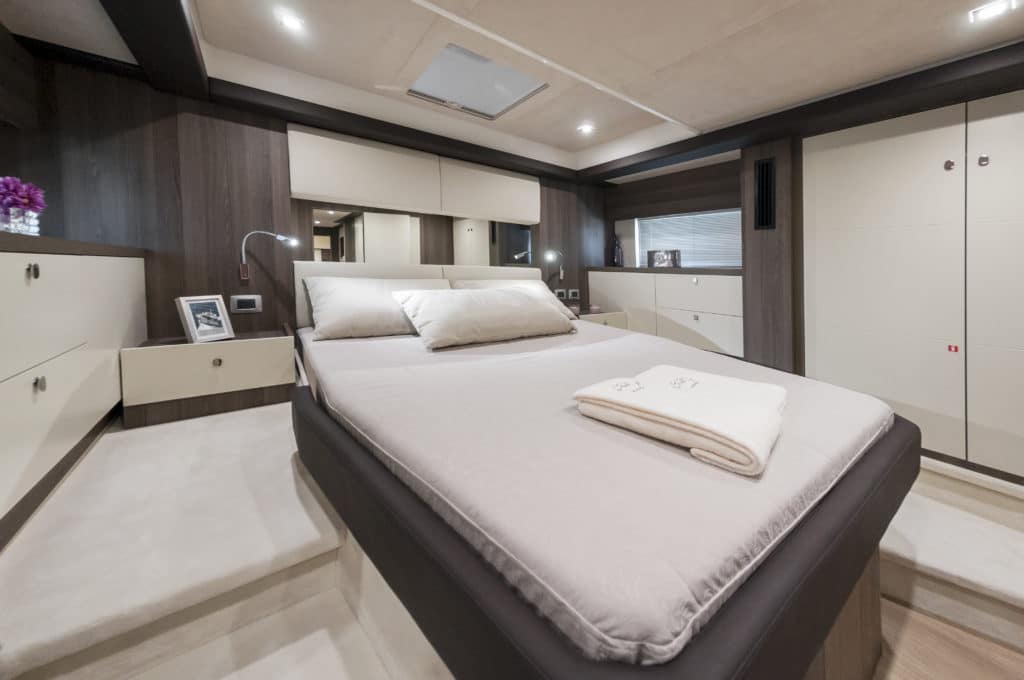
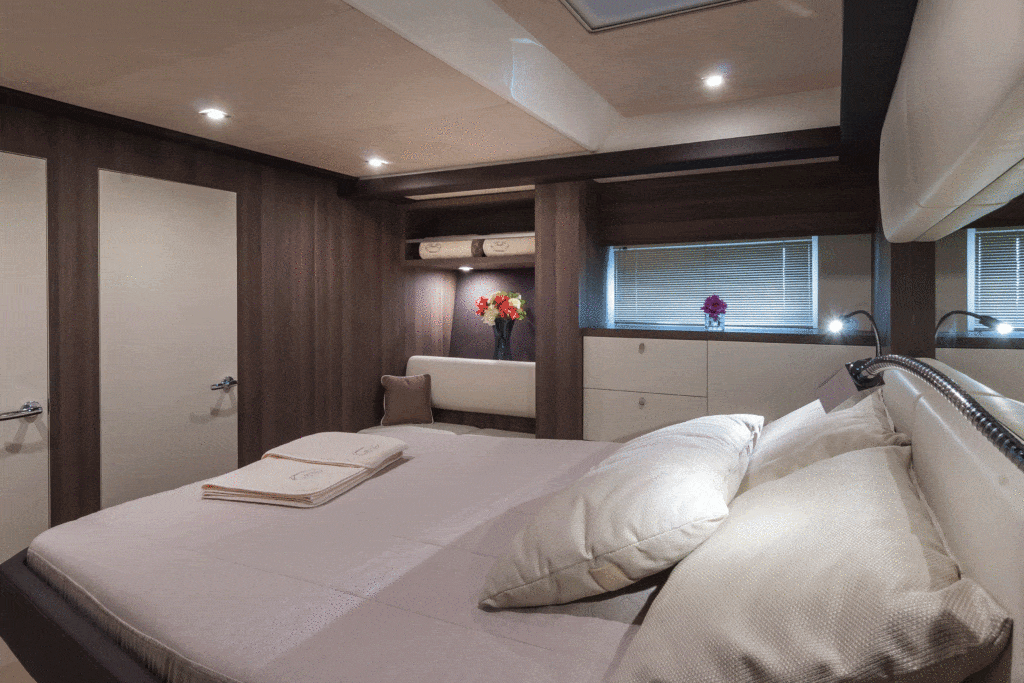
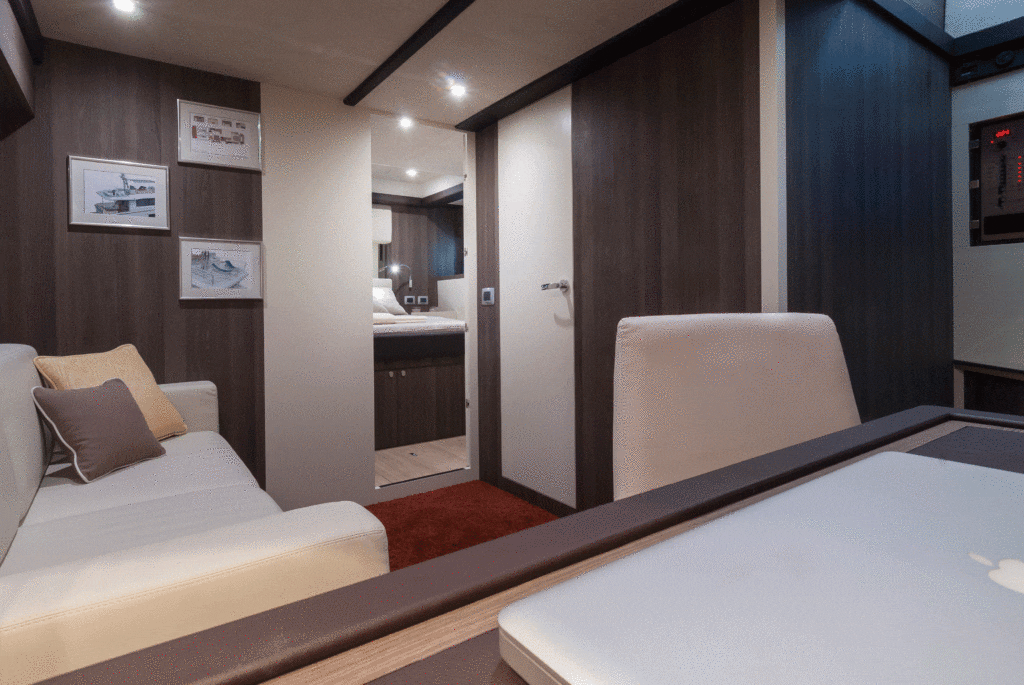
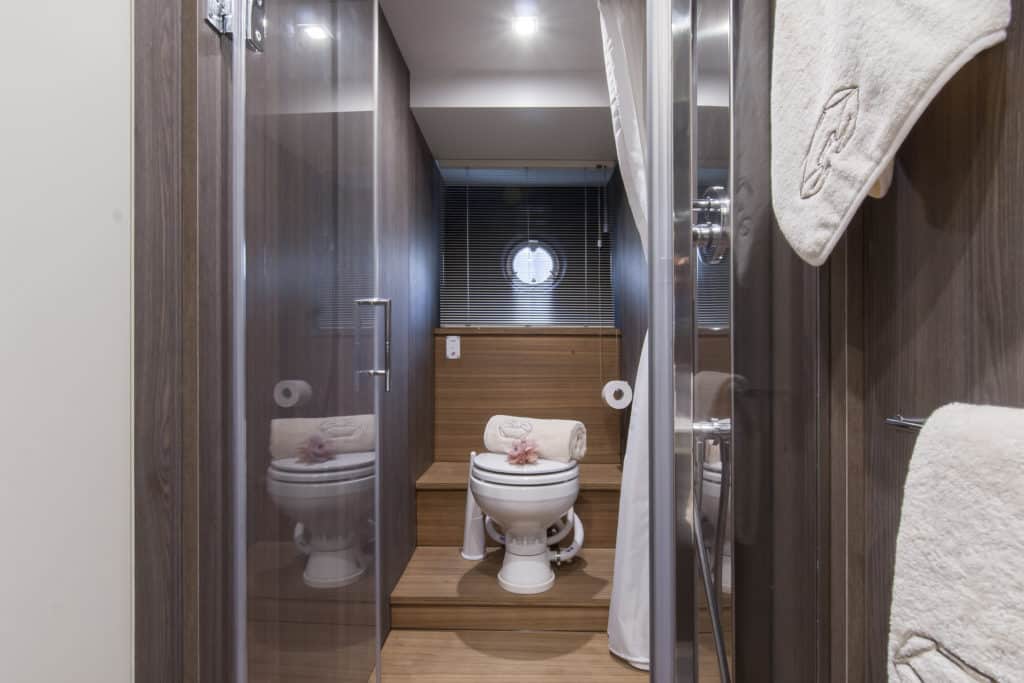
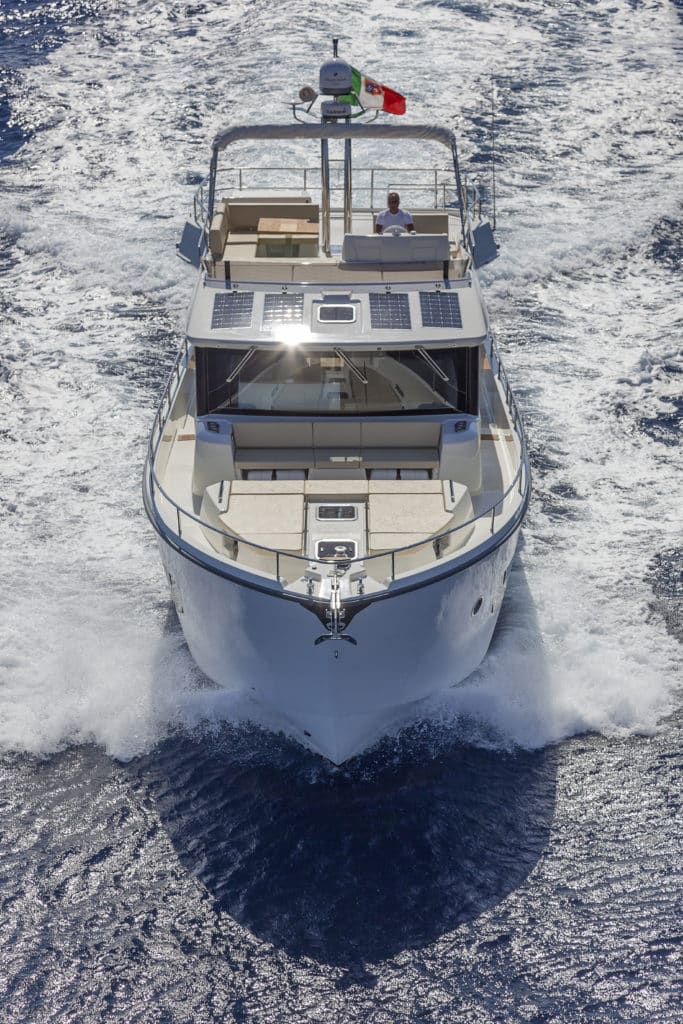
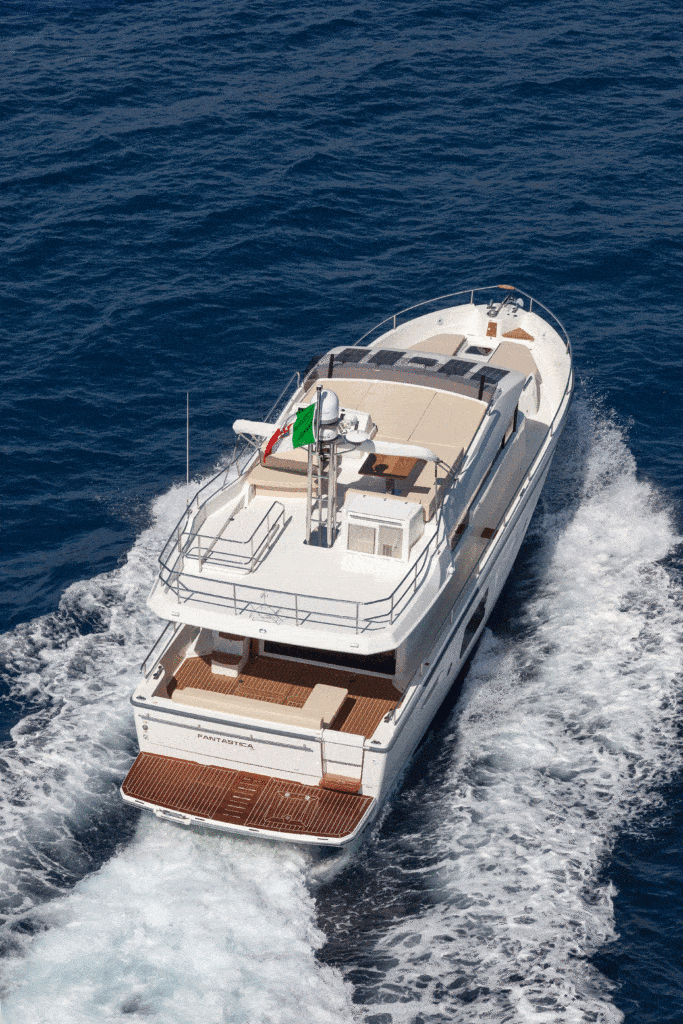
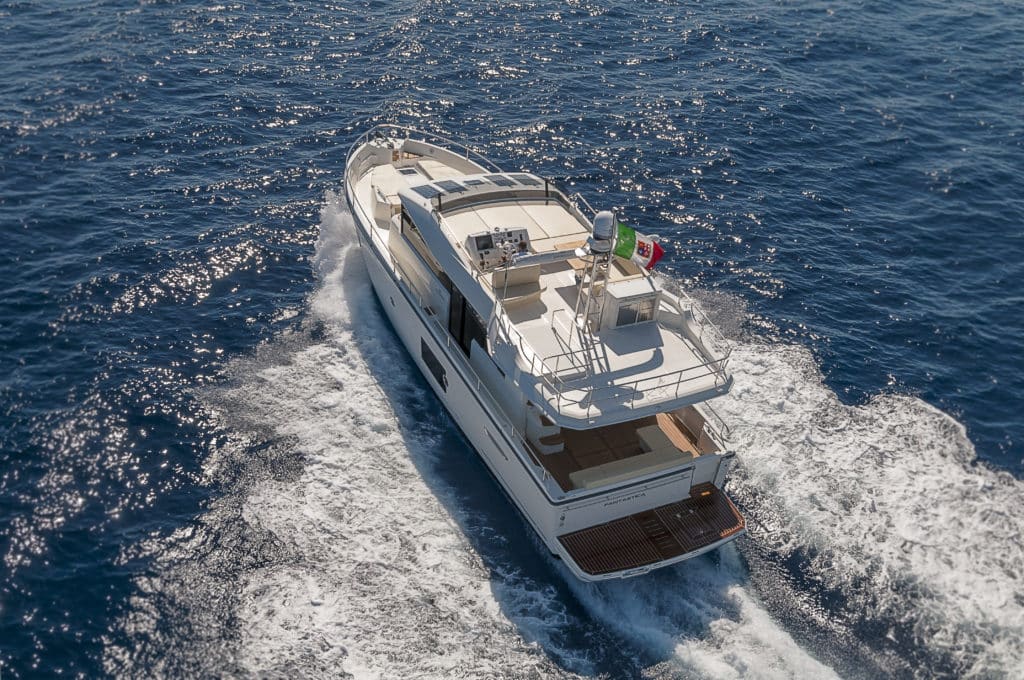
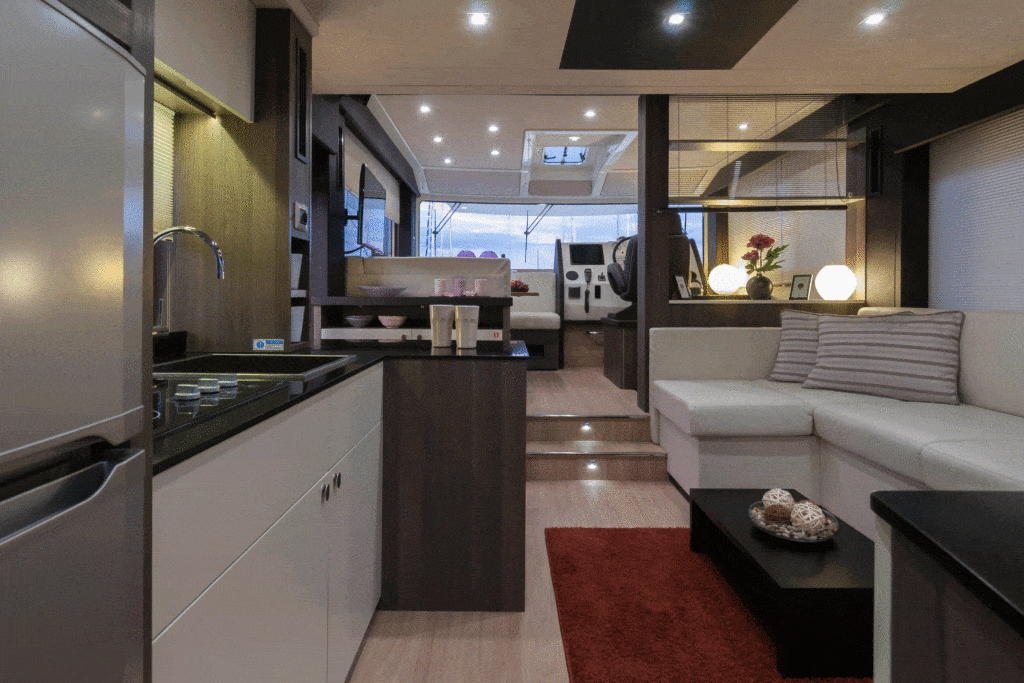
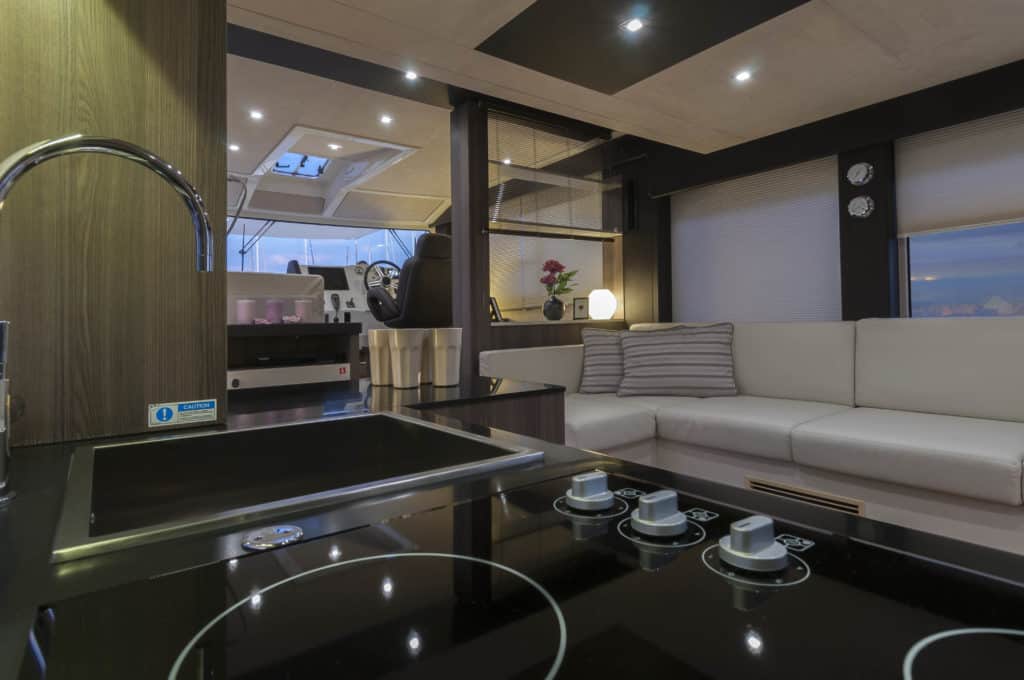
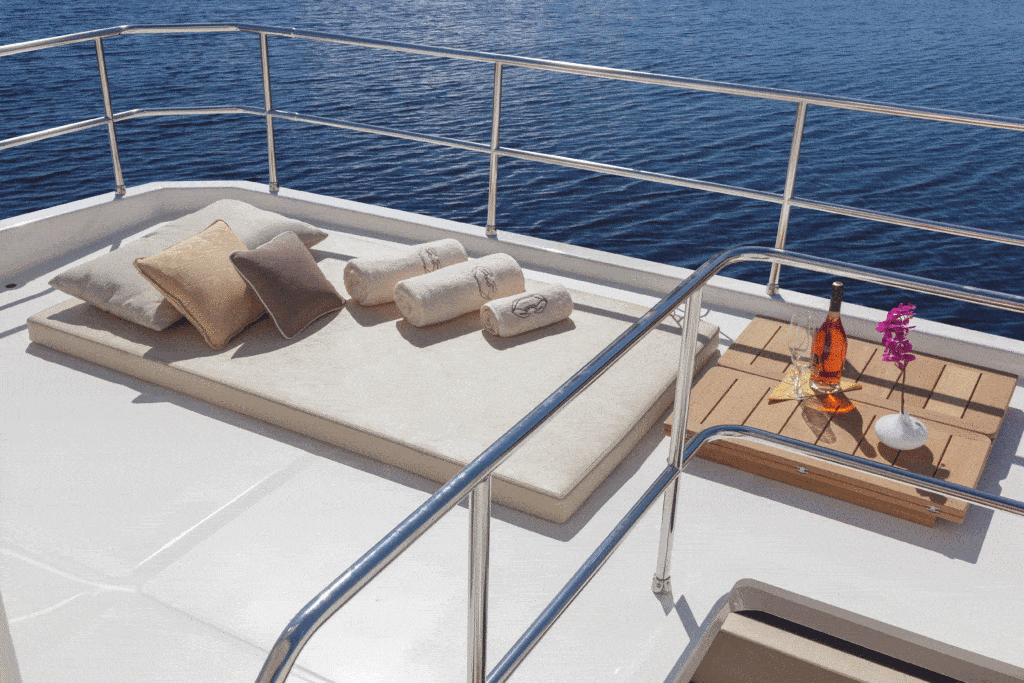
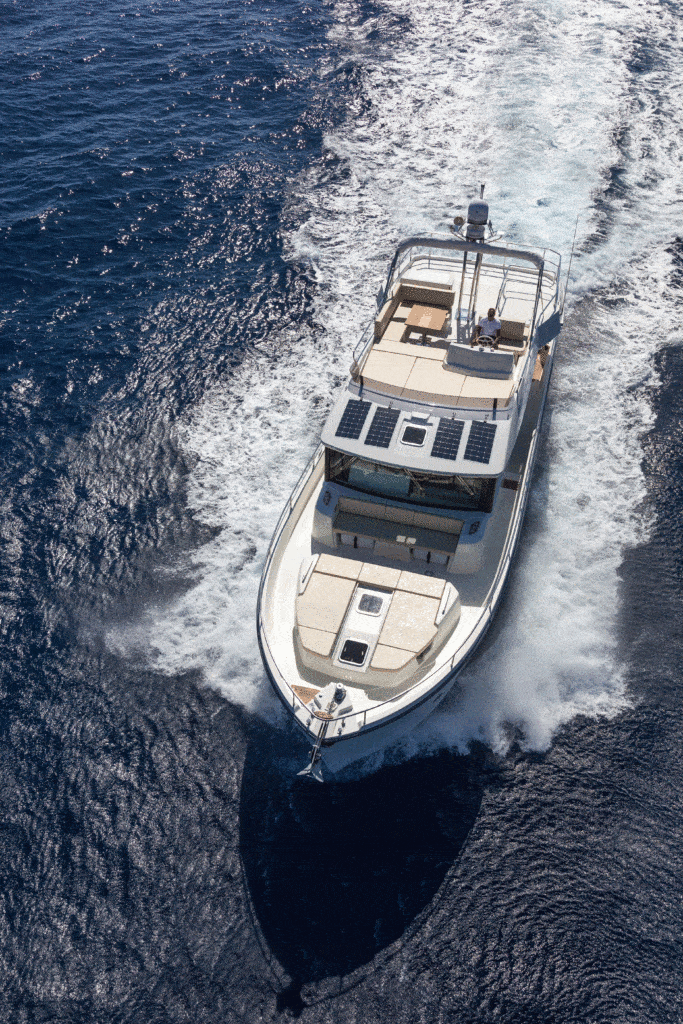
Italian builder Cranchi has entered the world of passagemaking with its Eco Trawler 53 LD. The firm, which has established a global presence with its coupe and flybridge motoryachts, adopted a new mind-set with its 53.
The boat is broad and intrepid-looking and has a range of nearly 2,000 nautical miles at 7.5 knots. Four solar panels across the flybridge front also proclaim its eco-friendly status.
When I first saw the trawler sitting among the other Cranchi lines at the Cannes boat show in September, I wasn’t so sure if she was a family fit. The 53 seemed too cumbersome, with an aggressive hull and boxy superstructure that looked almost misproportioned among the builder’s svelte express cruisers.
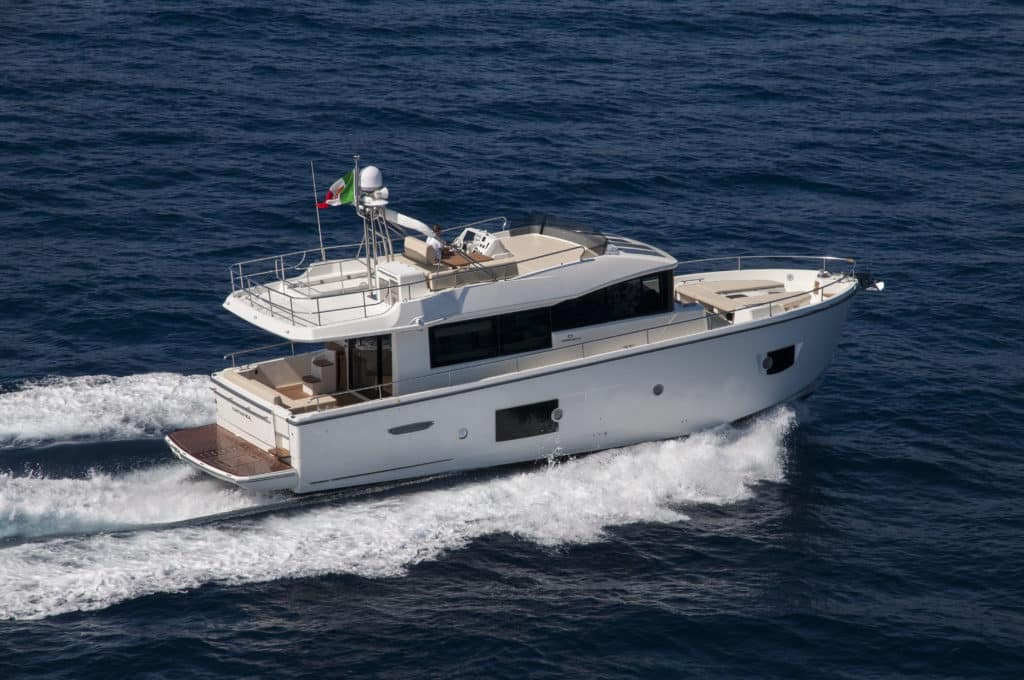
Show-goers on board the 53 also made it hard to see the details. When I climbed aboard eight weeks later, however, I realized that this builder had discovered a sweet spot in the trawler segment.
“The boating market is always changing, and we must change with it,” says Paola Cranchi, a member of the family that built its first boat on Lake Como in 1870. “We need to anticipate what the new market is looking for before the new trend takes over completely.”
Trawlers are trendy? Several Italian shipyards think so and are focusing on the segment. At first, I wondered if the Eco Trawler name was a green marketing tactic to gain a foothold among more established trawler builders.
But I could see that Cranchi wasn’t following the pack. It was pushing the design forward. The builder started with a simple trawler topside and added some of its own DNA in the hull, but also made sure that every part of the boat was livable enough for passagemaking.
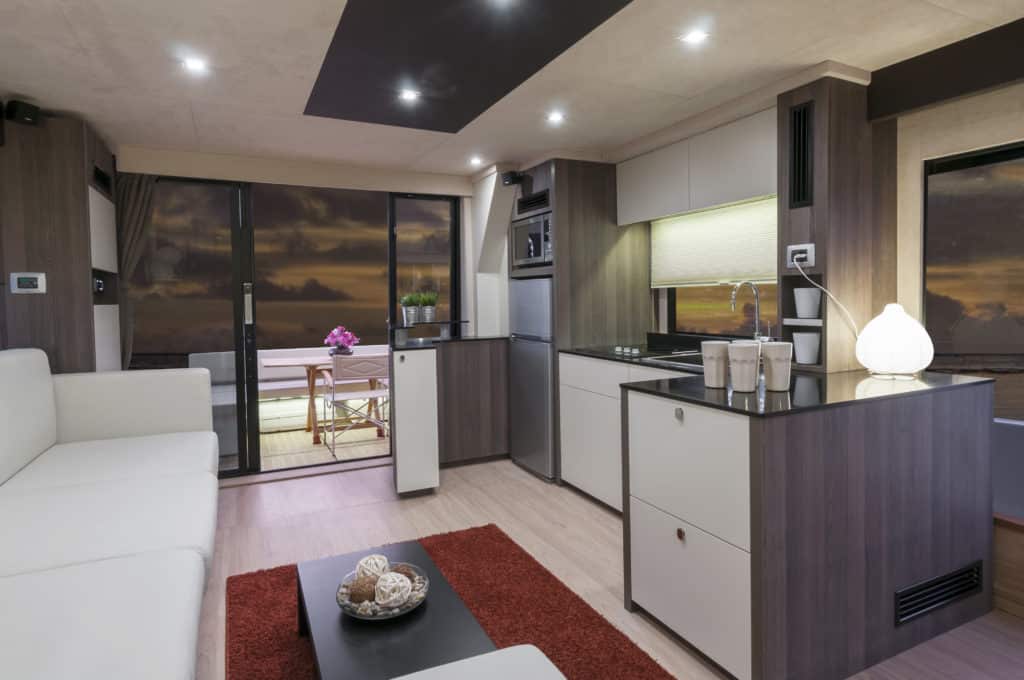
Details such as a retractable canvas Bimini on the foredeck, a three-panel cockpit door that slides open to fully connect to the salon, and mesh screens on the hatches clearly showed the designers were thinking about live-aboards rather than weekenders.
What I really liked, though, was the way Cranchi struck an honest balance between form and function. The 53’s expansive split-level salon, for instance, had headroom of 6 feet 9 inches with large windows everywhere, except for a few structural columns amidships and at the stern.
The natural light and uncluttered layout in the rear section of the salon, with the galley portside and white-leather lounge starboard, left a sense of open space.
Combine that with the tactile materials (raised-grain oak paneling, suede and leather headliner squares, smooth-finished elm shelves) and the salon seemed more like a luxury condo than a boat.
Throughout the boat, there was nothing gimmicky or extravagant. Every design feature made sense on a trawler where every inch matters. The picture window that divides the starboard lounge and helm area is a great example.
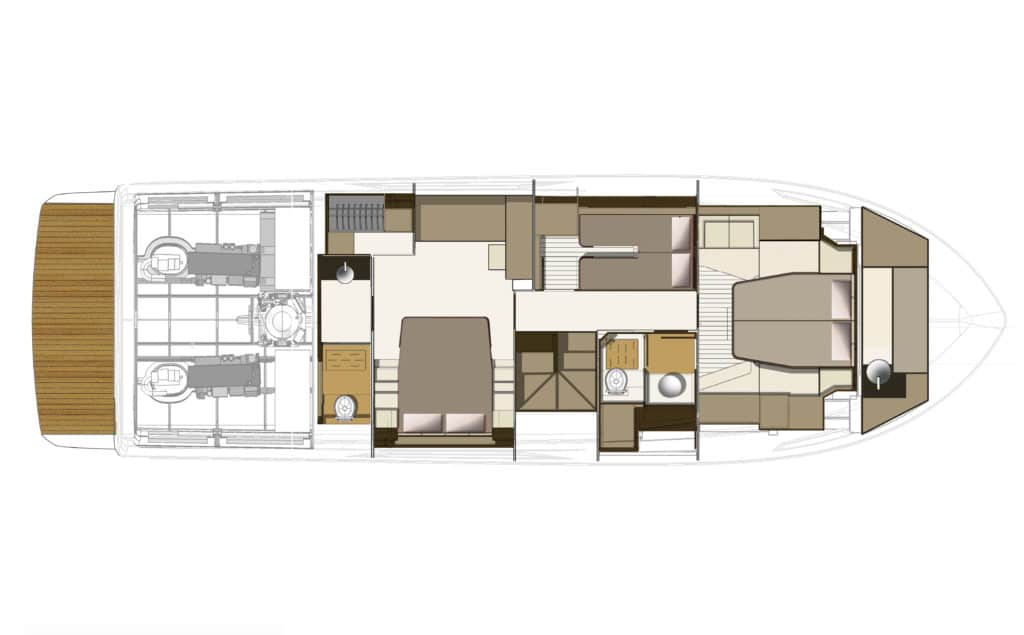
Most builders would use a solid bulkhead to divide the two areas (the stairs to the lower deck are just abaft the helm area, so a division is needed to prevent an accident).
The window maintains an unbroken line of sight forward for anyone in the aft salon, but its set of blinds also creates an instant split between the two areas. It’s a relatively minor feature, but it adds to the quality of life on board.
There are other creature comforts like a large galley (with a 43-by-70-inch countertop) with a full-size Indel fridge, Trinox ceramic-top stove, Nardi microwave and Isotherm wine cooler. Cranchi designed a shelf at the edge of the galley that works as an alfresco coffee bar with the cockpit door open. A 32-inch Samsung TV sits on a pedestal between the salon’s two halves.
Forward, the helm station is almost like a throne where the skipper has his own personal fiefdom, separated nicely from the forward U-shaped lounge and teak table to port.
The in-house-designed bucket helm seat is on a pedestal with the large console in front and an area to the right for the throttles, trim tab and joystick control. Hull No. 1 is equipped with a 12-inch Garmin 8000 multifunction display (including radar and a GHP 10 autopilot for the Volvo Penta IPS setup) to the left, a Side-Power bow thruster below and an air-conditioning vent at the bottom.
On the upper right are engine function gauges, Volvo Penta displays and access to the Humphree trim tab system. On the far right, the throttles sit below a chart locker.
The view was enhanced by the unbroken single-pane windshield, with three large wipers ready in case the weather went foul. It didn’t.
| Specifications | Builder Supplied Number |
|---|---|
| LOA: | 55’9″ |
| BEAM: | 16’3″ |
| DRAFT: | 3’3″ |
| DISPL: | 40,120 lb. |
| FUEL: | 740 gal. |
| WATER: | 214 gal. |
| DEADRISE: | 13 degrees |
| ENGINES: | 2 x 435 hp Volvo Penta IPS600 diesel w/ pod drives |
| BASE PRICE: | $1,200,000 |
The early November day was bright and warm, with seas running just 1 to 2 feet. The 53 is powered by twin 435 hp Volvo Penta IPS600 diesels with pod drives.
Cranchi chose Volvo’s IPS system not only because it requires a smaller engine compartment (and leaves more space for the aft master stateroom), but also because it delivers excellent fuel efficiency at a friendly cruise of 11.4 knots at 2,500 rpm and a top end just shy of 22 knots. I’d likely cruise her at the slower speed, as it doubles her fuel efficiency.
The boat was a pleasure to drive as she shouldered her way through the sea and made turns with surprising agility — not with the slow-ratcheting turns of most displacement-style trawlers. I ran the boat through her wake a dozen times and she always felt solid.
I also used the IPS joystick in the calm water, effortlessly maneuvering the boat back and forth (and we eventually used it back at the dock to bring her in stern-to). The 53 is a boat that you could drive all day, either from the cabin or up on the flybridge.
The flybridge helm is positioned to port, which gives the captain a choice of running up there if he wants to dock portside-to or going below for starboard-side approaches.
It felt a little odd sitting behind the more than 7-by-10-foot sun pad instead of all the way forward as on most trawlers, but visibility was unimpeded. The console is well equipped with a 15-inch Garmin display, trim tabs, engine function gauges, joystick and Garmin VHF 300.
The flybridge is where Cranchi adds a social element. Besides the huge sun pad, there is also a 73-by-53-inch lounge with a 33-by-41-inch teak table. Behind that sits an entertainment center with charcoal grill, Isotherm fridge and ice maker.
Space from the wet bar to the back rail measured 8 feet 1 inch. The radome is 24 feet high on the stainless-steel tower, which also includes a KVH TracVision antenna, so you know you’re on a long-distance cruiser.
| RPM | KNOTS | GPH | dB(A) |
|---|---|---|---|
| 600 | 2.6 | 0.6 | 54 |
| 5.71000 | 5.7 | 1.5 | 60 |
| 1500 | 7.5 | 2.9 | 55 |
| 2000 | 9.7 | 8.7 | 56 |
| 2500 | 11.4 | 16.1 | 62 |
| 3000 | 15.5 | 26.9 | 64 |
| 3500 | 21.5 | 39.8 | 65 |
| 3630 | 21.7 | 43.8 | 67 |
Cranchi also turned the bow into a legitimate social area, with dual sun pads at the front and a wide lounge abutting the windshield. A visorlike Bimini top, which attaches to the windshield and covers the lounge, is an innovative and easy way to create shade.
Aft, the cockpit offers a third area for get-togethers, with a lounge and nearly 6 feet of open space between it and the salon door.
There is a nice sense of proportion to the three-room layout belowdecks too, with the master suite aft, second stateroom at the bow and owner’s choice for the space in the center.
Cranchi offers four options: an office, third stateroom, dinette or stowage/bunk. Hull No. 1 had the office, which is a nice open choice with desk, lounge and a washing machine tucked into a bulkhead.
It seemed like the designers could’ve used larger windows for more light, instead of just a porthole, but otherwise it felt spacious.
The 53’s forward stateroom, with a double seat to port, island berth and large locker to starboard, also seems larger than VIP cabins on other boats in her class.
Headroom runs from 6 feet 8 inches at its highest point to 5 feet 2 inches over the berth. Cranchi did a nice job of using all available space for fitting in long-distance amenities, including turning the space beneath the berth into a freshwater tank. Floor hatches also run from the forward stateroom back to the master, offering plenty of bilge access.
The master stateroom really epitomizes smart design. A queen-size berth sits against the starboard bulkhead, offering an excellent view from the large hull-side window.
Across is a large cabinet, and just aft is a walk-in closet. Along the rear bulkhead is a full-beam head. The glass-enclosed shower has teak flooring and walls as well as a rainwater showerhead.
The enormous sense of space in this master stateroom comes in part from the layout of the berth, but also benefits from the Volvo Penta pod-drive diesels being set farther back than straight-shaft-drive power plants would be.
A drop down into the engine compartment revealed decent working space with good distance between the engines and generator. The plastic fuel tanks also had a nifty see-through gauge that extends up the side of the tank, so you can check fuel levels with a glance.
Fit and finish are at a high standard. I saw one inner door frame with some plywood showing, and some exterior latches looked like they could be beefed up, but generally the boat seems well put together.
For its initial foray into the trawler field, Cranchi has designed a winner of a vessel, drawing on some of its cruisers’ features but also keeping things simple and straightforward.
The external profile might at first catch traditionalists off guard, but once you see this boat’s details, the Cranchi Eco Trawler 53 LD could well become the new darling of the passagemaker set.






